The Value of the Social Proof Phenomenon

The Social Proof Phenomenon is a foundation piece of how our culture buys now. Between Instagram Influencers, Yelp reviews, and 5 star Amazon products, most of us make purchase decisions on the value others see in the product. How can Social Proof and online reviews work for you?
The Social Proof Phenomenon
What do online reviews have to do with “Social Proof?” “Social Proof” is the phenomenon based on the fact that it’s easier to buy things or trust companies if we know that other people already have. Our peers provide the proof of something’s value. None of us would buy something on Amazon with 10,000 1 star reviews. We trust those 10,000 strangers because that product connects us as a community.
“Social proof” is also part of the transparency that builds brand trust. Most consumers (almost 88%) research a business before buying from them. A lot of that research comes from reviews and reading what other people have said about their experiences.
What Can Social Proof Do For You?
Reviews can help educate consumers on your products and services. Reviewers usually talk about their specific experiences in their reviews. It can be an easier way for potential customers to learn more about what you offer.
Reviews Boost SEO. Specifically, Google Reviews. Google indexes reviews connected to your listing to help filter results. Especially for local traffic. “Best __ Near Me” is decided by reviews and stars. Customers will often use your keywords in reviews without even realizing it. This helps Google learn about you.
What Can You Do To Collect Reviews?
People are inclined to leave reviews if they a specifically positive or negative experience. Therefore, work hard to provide an overwhelmingly positive expertise for your customers! (You should be doing this anyway; the review is just a byproduct. 😉 )
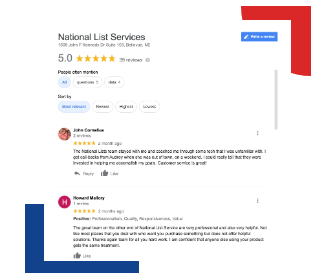
People like to do things for other people so a great way to collect reviews is to just ask for them! A follow up survey email after they buy from you is an easy way to this. Ask them specific, easy to answer questions about things such as: service response times, shipping times, product or service quality etc.
Make it easy to review you. No one has time to take 10 minuets following a complicated review survey with long required written answers. People are doing you a favor by reviewing you, show that you appreciate it by being respectful of their time and effort. Take out pain points of the review process: go through and make sure there aren’t any unnecessary steps or questions. Double check the user interface, id it easy to figure out?
Incentivizing your reviews (specifically ecommerce) is a big no-no! As temping as it is to show your appreciation for the review with a coupon or free shipping, or something: don’t. Both Google and Yelp have policies in place banning incentivized reviews. They will take the reviews down and give you a slap on the wrist.
What To Do With Reviews Once You Have Them
You have the reviews – now what? Here’s 2 ways to leverage them!
- Show them off
Let your reviews sell your product for you. Happy previous customers can be a great way to convince your potentials to buy from you! Show off your reviews on your home page with Google review widget or prominently feature some reviews as part of the design. Don’t forget to ask for permission first if you are going to highlight a specific review, especially if you are going to use their picture. - Engage with reviewers
let them know you appreciate them! It doesn’t have to be a big deal, simply liking the review or just saying thanks goes a long way. That little bit of effort can turn a happy customer into a loyal one. And a lot of marketing automation software makes replying to reviews across multiple platforms easy.
Do you have a favorite customer review?
While we are on the subject… leave us a review! 😜
Get the most out of Instagram – How?
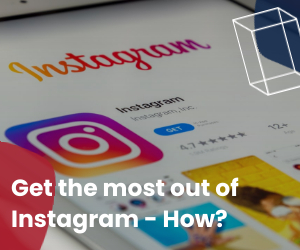
Instagram can be a confusing and overwhelming beast. It has its own constantly changing algorithm and culture that separates it from any other social media. Getting Instagram to work for you takes time, effort, insight, and unfortunately: intuition. What do you need to get the most out of Instagram?
Being an Instagram pro requires knowledge of 3 things: its culture, its algorithm, and your own analytics of those 2 things. Understanding the culture and the algorithm don’t do you much good if that knowledge is disconnected from your own follower and user data.
Instagram Culture
The biggest thing to remember is that Instagram is not Facebook. Facebook is for information, Instagram is for connections. And Instagram’s user base is generally younger than its big brother Facebook. More than 50% of Instagram users are between 18-35, while more than 60% of Facebook’s user are over 35. Therefore, these users have grown up with social media, including Instagram, and have shaped its function and culture. (For example, by the time my friends and I were old enough to have social media, Facebook was already too big and felt like something elusively for our parents. For a long time, Instagram was the only social media any of us had.)
Although Instagram is great for showing off products, the thing it is best at is highlighting your brand’s culture and personality. It is not enough anymore to have a good product available anymore, your consumers need to feel connected to your brand. 56% of Gen Z consumers say that having shared passions and perspectives is a major factor when it comes to their engagement with a brand.

And 49% of young consumers say they will evangelize a brand they feel represents their values, likes, and personality.
Don’t be afraid of incorporating causes you care about into your brands personality! 72% of consumers want the brands they care about to be positive contributors to society. We’ve seen in recent years that many brands (especially smaller companies) connect their core brand to a charity or cause they care about. Younger consumers are 69% more likely to buy from a brand that contributes to a cause.
The Algorithm
According to Instagram, they decide to show your content based on 6 factors:
#1: Interest
#2: Relationship
#3: Timeliness
#4: Frequency
#5: Following
#6: Usage
The first three are somewhat self-explanatory. Instagram shows you things based on what you’ve liked in the past. They highlight posts from people they’ve decided are close to you: people whose content you most engage with, the people who tag you, the people you DM etc. Instagram also cares about when you post. Keeping track of your analytics can give you a good idea about when the best times to post for you are.
#4 Frequency

Frequency isn’t about how often you post but instead about how often interact with the app. The more often you check your Instagram feed the more likely your feed will be chronological because they are always trying to show you the newest content available. This is helpful to understand what type of Instagram users your followers are. If they don’t check the app that often, then it will be harder to have your posts seen. Building up the other 5 components to the algorithm will be all the more important.
#5 Following
Instagram assigns value to follower counts in a couple different ways. First, is simple: the more followers you have the more likely your posts will be highlighted in your follower’s feeds. However, they also look at your follower’s engagement levels. If you have a lot of ghost followers that don’t interact with you, then they could actually be hurting you. Another thing to consider, the more people your followers follow the more competition for space in their feed. Do your followers follow a lot of people? Understanding that can help you decide if you need to adjust where you focus your efforts.
#6 Usage
This is how Instagram qualifies the amount of time spent on the app. The more time spent on the app, the deeper into its catalogs they have to pull from to show content. You can use this to your advantage by using hashtags or developing content that matches with the interests of Instagram’s heavy users.
How do you get the most out of Instagram?
How do these marketing channels stack up?
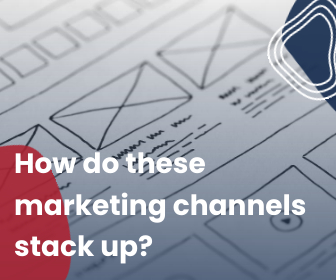
There are A LOT of different marketing channels out there. What are the pros and cons of some of the common ones?
Social Media
Pro
There are over 3.8 billion people on social media around the world. Social media is a fantastic way to connect with customers, build brand loyalty, and generate sales.
People don’t just want to buy from companies because they have good products and services. They want to know what your brand stands for in addition to what it sells. Social media can help potential customers get to you. Social media feel like a 1-on-1 conversation between the brand and consumer, which helps build loyalty.
Con
A lot of the value from social doesn’t show up immediately. It’s rarely simple to track social media’s ROI. Often the goal of social media is not just to generate sales but instead to build connections. Without measurable results, using social media can be discouraging.

Pro
Often it a brand’s only way to communicate with customers and can feel very one on one. A lot of millennial and gen z’ers expect to communicate with brands through email. Also, pretty much everyone has email so you know you will be able to communicate with people through email.
Con
We all get so. many. emails. Most office workers receive 127 every day. It can be hard to stand out from the crowd. People don’t have time to read emails that don’t actually provide them value.
Email marketing also has a lot of laws and rules connected to it that can hurt you if your aren’t careful!
Content/SEO

Pro
Customers often rely on a business’s website for information. Especially for local businesses, it can be the only way to know a shop hours or address. Putting the information on a website instead of a social media or directly in a browser legitimizes the information.
Good SEO gives your website credibility. It makes it easier for people to find your website when they search for it. And it helps create a smoother user experience.
Con
Bad SEO can hurt you. Most searchers never go past the first or second page of Google, though, which is why those top spots in the search results are so coveted. Having the proper SEO can prevent your website form getting organic traffic.
53% of all trackable website traffic comes from organic search. SEO is the main thing influencing how easy it is to find you online organically. Which is probably why it’s estimated that agencies and brands spent over $79.27 Billion on SEO services last year.
Google Ads

Pro
Where are people? On their phones. So, google ads is an extremely effective way to find people where they are. Google ads is great for brand awarness as well as retargeting. It is great if you want measurable results and analytics.
Con
Billboards, signs, posters, newspapers, and magazines all exist with in different physical spaces. With digital advertising however, we are all competing for the same ad space. That ad space is worth more now has less guarantees attached to it.
Trying to figure Google ads can feel like rocket science. There’s a large learning curve and it can a while to feel confident in the set up.
Print and Mail

Pro
Direct mail average open rate is somewhere between 68 and 90%, which is double, triple, or quadruple the average open rates of other marketing channels. Do people who open direct mail actually purchase? Yes! On average people who receive direct mail purchase 28% more items and spend 28% more money!
Why is direct mail so effective? It comes down to fact that we (humans) like getting mail. 41% of Americans of all ages look forward to getting their mail every day. We still want very real things in our hands, which is something totally lost in email inboxes or on social media. That tactile connection translates into 💰.
Con
Since Direct mail requires use of the postal system it has fixed costs. The graphic design of the mail piece may also have an additional cost. Using direct always requires a bit of math and if done wrong can hurt your ROI.
It’s not always posable to see direct, measurable results, from Direct mail campaigns. And if you can measure results, it may take a while to get the full picture.
Another thing that can be a disadvantage to direct mail is that you need a really good foundation of address data. The problem us that a lot of data providers don’t make sure that their data is accurate and that hurts the effectiveness of your campaign.
Connected TV

Pro
TV is a time-tested advertising channel. Although it’s a lot less common than it used to be, it can still be very effective. Many marketers are using CTV (connected TV) or OTT (over-the-top) channels to target consumers using streaming services and connected TV devices such as Hulu and Roku. Advertises are embracing these platforms as more and more ad space becomes available. Spending for CTV advertising is expected to grow from $6.94 billion in 2019 to $8.88 billion in 2020, a 28% increase.
Con
With customer attention spread so thin and cable tv subscriptions consistently falling, (over 16 million in the last five years) there’s a lot less advertising space available. Content consumption is at an all-time high and therefore, competition for viewer’s attention is as well. 84% of marketers say that it is getting harder to grab a consumer’s attention with television advertising alone.
Audiences today expect personalized and relevant targeted ads. Linear TV (cable and network television) often fall far behind in targeting capabilities. Therefore, it can be a challenge for advertisers to figure out how to integrate linear TV into their campaigns.
7 Ways To Make More Engaging Content
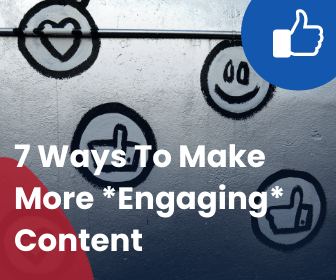
Content creation is an integral part of marketing or running a business in general now. However, a lot of companies struggle with creating content that generates engagement. Part of the value of content creation is that engagement and the conversation between brand and consumer. What can you do to create engaging content for your brand?
Here’s 7 things we have found to be essential in making quality content!
Know Your Audience
The content you create for one audience can be very different from another. Understanding the WHO is helpful first step.
It can also be helpful if you think of your audience as a single composite person. Instead of trying to talk to all of them, you are instead making content for one person. A lot of companies do this by making a buyer persona. That way you can think, “Would my buyer persona like this?” vs. “Would all my followers enjoy this content?”
Make a Plan
There is nothing more overwhelming than trying to maintain consistent content posting across multiple channels without a plan. It can feel like juggling snakes. 🐍 Making a plan can be as simple as figuring out what types of content you want to post and when it would be best to time to post it. The more specific your plan is the more you time you take out of the equation.
Part of making a plan is planning out your message and/or your angle. Now that you know who your audience is, think about what type of content would work best for them. Knowing what you want to talk about can make it easier to figure out what types of content would be best. Would your audience benefit from long form blog articles or would a TikTok series be more helpful? Both of those types of content take a lot of effort, so planning it out ahead of time is valuable!
Find Shared Passions
The sheer amount of product, companies, and information available is staggering. It is not enough anymore to have a good product available anymore, your brand ideals and personality need to match with the personality of your consumers. 56% of Gen Z consumers say that having shared passions and perspectives is a major factor when it comes to their engagement with a brand. However, most consumers are fantastic at sniffing out inauthenticity. Your brand personality and ideals need to actually be what you say they are. Actions speak louder than words!
What are the advantages of having a well-defined brand personality and ideals? Giving your company a personality makes things like content creation a lot easier. Knowing who you are also can help you make decisions about the direction you want to go in the future.
And 49% of young consumers say they will evangelize a brand they feel represents their values, likes, and personality.
Don’t be afraid of incorporating causes you care about into your brands personality! 72% of consumers want the brands they care about to be positive contributors to society. We’ve seen in recent years that many brands (especially smaller companies) connect their core brand to a charity or cause they care about. Younger consumers are 69% more likely to buy from a brand that contributes to a cause.
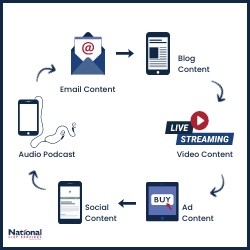
Keep It Simple
Don’t make it harder than it needs to be. No matter who your audience is, needlessly complicated language or content structure isn’t appreciated. Simple and honest is always good. Remember, why you are making the content. Is it to promote you or your brand? Then tone of the content should match your voice. People can see right through any inauthenticity if you are trying to make something that isn’t you.
It’s easier to connect with a brand online if you feel like you are talking to a real person. Does the content you are making sound personal?
Remember the Big Picture
Why do you want to make this content? Keep the big picture of your content in mind as well as each individual piece. Are you trying to promote a specific product or service? Don’t be afraid to include a call to action in your content! A call to action is how to accomplish the goal of your content. It’s the follow through.
A good call to action is simple and concise. It uses strong verbiage. Give your audience a good reason to take the desired action. Don’t be afraid to get creative!
Take a Step Back
When it comes to content, it’s often valuable to take a step back and from your project and let it rest for a bit. The longer you work on a piece of content the easier it is to be become blind to mistakes, errors, and typos. You may be surprised by the power of fresh eyes!
An old copy writer trick is to proofread backwards. Instead of starting at the beginning of your content: start at the end. Because your brain is following a different path through the information, it sees things in a different way. Starting at the end allows you to look at it sentence by sentence instead of word by word or thought by thought. Knowing your content is edited well will help you feel more confident in posting it.
Another aspect of taking a step back from your content is revisiting old content. Repurposing or adapting finished content is an excellent way to stay inspired and make more content. There are always new things that can be added. Adding information keeps your messages up to date. Up-to-date content is more accurate and provides for value to your followers. Another reason to recycle content is that it gives more people an opportunity to see it. And even if someone has been following you for a long time there’s a good chance that they didn’t see the content the first time around.

Keep Consuming Content
This is my favorite part. 😜 One of the best ways to keep your own content sharp is to consume other content. It can inspire you, help you stay up to date with current trends, and keep your skill sharp. Most ideas don’t start in our heads, the spark is external. All of the creative juices it takes to create content can easily be burnt out if you don’t feed it with creative thing that you care about. Change your scenery, have conversations, read books or articles, watch a movie or show. Diversity of other creative inputs will refill your own creativity!
What type of Content have you found to be the most engaging with your audience?
Your Marketing Needs These 9 Videos
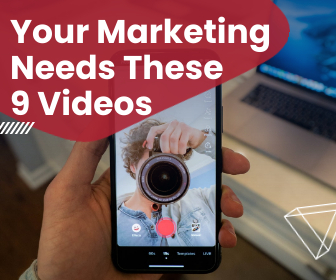
Did you know that are NINE types of videos your business needs? Gone are the days when the only video advertising was television commercials. Now, video is ever-present in our lives. For example, over 2 BILLION users log into YouTube every month. Just like any other tool available, as a business, your brand is going to need different things from different types of videos. Are you using all the kinds of video?
Since different types of videos are used for different things, it’s important to have a well-rounded video strategy. One that helps attract customers, educate them, converts, as well as creates customer engagement and builds relationships. Some types of videos that do that are webinars, promos, digital display, social content, and personalized videos for customers. Some of those are best when heavily scripted and polished, others are great when they feel quickly thrown together. What you need depends on what need you are trying to fill and where the target viewer is on their customer journey. It also depends on how much time, effort, and/or money to pour into video creation.
Explainer Videos
Explainer Video are quick 30-60 videos that explain who you as a company are. It’s basically a pitch video. They great for top of funnel interactions where you need to introduce yourself to potential customers and convince them why they should care about you. They work best when they are made with the audience in mind and feel personal. Don’t forget a strong call-to-action!
You can use Explainer Videos on your website, (think homepage videos) on social media, including YouTube, as well as in ads.
How-To Videos
How-to videos are great for any point of the funnel, can be just about any length, and be used for anything other than ads. However, they don’t need to be extremely high quality or super polished. A real person-to-person feel is more effective. The point of a how-to video is to explain something in a way that will provide valuable content to your audience. This is not the time for a hard sell.
How-to videos are super engaging online because it can feel like pulling back the curtain and letting your audience in on trade secrets!
Promo Videos
Promo videos are basically the general term for commercials. Think short, polished, story driven, exciting videos with strong call-to-actions. They can be used anywhere you need to promote something!
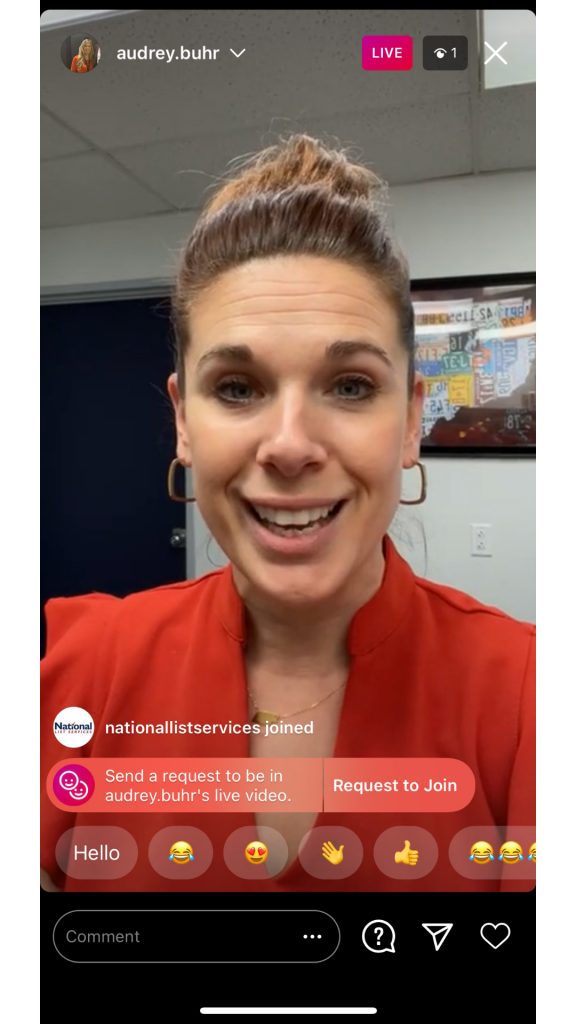
Talking Head Videos
Talking head videos could also be categorized as thought leadership videos. These videos are when you put yourself in front of the camera and share your personality and point of view. These are not designed for a hard sell but instead to show viewers your authentic self and brand personality. Talking head videos work best on social media and on YouTube.
Webinars
I’m going to include podcast videos here as well, (like the video recordings that most podcasts film while recording.) Webinars are inherently educational and therefore the focus needs to be on providing content for your viewers, not selling them. Most webinars are between 15-60 mins. And like in person seminars, they can take many forms: live Q&A’s, lectures, or panels.
Hosting a webinar takes a bit of IT knowledge so it’s totally ok to use a hosting service! It’s a good idea to have a moderator (and maybe an A/V guy) on hand for any troubleshooting or technical difficulties. After the webinar is finished you can make it available for on-demand viewing, as well as cutting the webinar up into smaller clips.
Case Study Video
A case study tells the story of how a real customer uses your product. It provides validation from a third party. Case study video work best when they are clearly planned out and polished. Include the customer/video star on the planning process, that will make the video more authentic. Focus the video more benefits rather than features and back up the information with data.
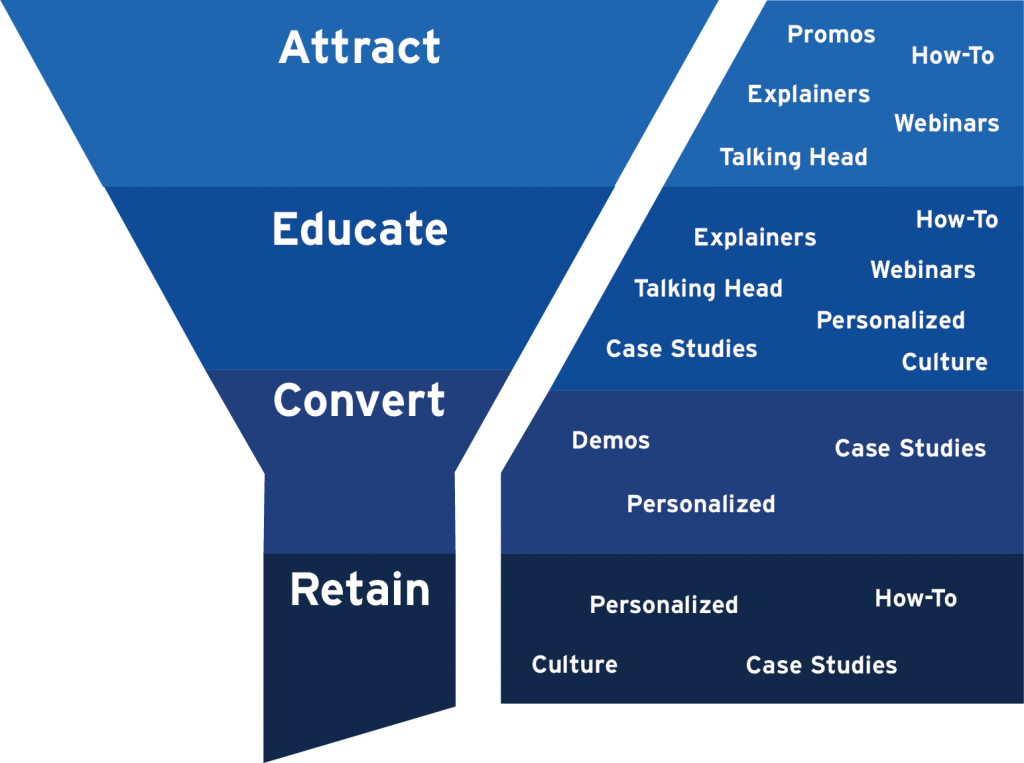
Fun/Culture Videos
These videos are a way to highlight your company’s culture and personality. They help tell your brand story and personality. Often these videos are narrative driven, fun, and humorous. A good example of culture videos is pretty much every company’s TikTok. They are quick and fun and feel personal.
Demo Videos
A demo video is a video that highlights how a product or service actually works. It’s there to educate and inform viewers. Keep the video as concise as possible. They can take a few forms: a broad overview, pre-recorded demo, or live demonstration. For example, we have broad overview demos of National List Services on YouTube, we prerecord demos to onboard clients or answer technical questions, (Loom is great for this) and we often do live demos when showing potential clients how our systems work.
Personalized Videos
Who doesn’t love a personalized video? Sending videos instead of texts or emails to clients is a big part of our follow up. It’s so much more touching to see someone’s face and hear your name than just a written follow up. Because of the nature of our business there are some clients we have never actually met face to face and sending them a personalized video can help bridge that gap.
So, with so many avenues and different types of videos, it’s easy to see why it’s such a popular marketing tool. How do you use video in your marketing?
Scared of Content Creation? Here’s 6 tips

Content creation is an integral part of marketing or running a business in general now. Even if you don’t think that you are a quote-on-quote content creator, you probably do create content. Every time you post on Facebook or update Instagram, that’s content. What are some easy things you can do to up your content game?
Here’s 6 things we have found to be essential in making quality content!
Know Your Audience
The content you create for one audience can be very different from another. Understanding the WHO is helpful first step.
It can also be helpful if you think of your audience as a single composite person. Instead of trying to talk to all of them, you are instead making content for one person. A lot of companies do this by making a buyer persona. That way you can think, “Would my buyer persona like this?” vs. “Would all my followers enjoy this content?”
Make a Plan
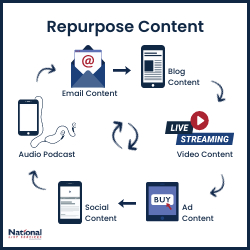
There is nothing more overwhelming than trying to maintain consistent content posting across multiple channels without a plan. It can feel like juggling snakes. 🐍 Making a plan can be as simple as figuring out what types of content you want to post and when it would be best to time to post it. The more specific your plan is the more you time you take out of the equation.
Part of making a plan is planning out your message and/or your angle. Now that you know who your audience is, think about what type of content would work best for them. Knowing what you want to talk about can make it easier to figure out what types of content would be best. Would your audience benefit from long form blog articles or would a TikTok series be more helpful? Both of those types of content take a lot of effort, so planning it out ahead of time is valuable!
Keep It Simple and Honest
Don’t make it harder than it needs to be. No matter who your audience is, needlessly complicated language or content structure isn’t appreciated. Simple and honest is always good. Remember, why you are making the content. Is it to promote you or your brand? Then tone of the content should match your voice. People can see right through any inauthenticity if you are trying to make something that isn’t you.
It’s easier to connect with a brand online if you feel like you are talking to a real person. Does the content you are making sound personal?
What is the Purpose of Your Content?
Why do you want to make this content? Keep the big picture of your content in mind as well as each individual piece. Are you trying to promote a specific product or service? Don’t be afraid to include a call to action in your content! A call to action is how to accomplish the goal of your content. It’s the follow through.
A good call to action is simple and concise. It uses strong verbiage. Give your audience a good reason to take the desired action. Don’t be afraid to get creative!
Take a Step Back
When it comes to content, it’s often valuable to take a step back and from your project and let it rest for a bit. The longer you work on a piece of content the easier it is to be become blind to mistakes, errors, and typos. You may be surprised by the power of fresh eyes!
An old copy writer trick is to proofread backwards. Instead of starting at the beginning of your content: start at the end. Because your brain is following a different path through the information, it sees things in a different way. Starting at the end allows you to look at it sentence by sentence instead of word by word or thought by thought. Knowing your content is edited well will help you feel more confident in posting it.
Another aspect of taking a step back from your content is revisiting old content. Repurposing or adapting finished content is an excellent way to stay inspired and make more content. There are always new things that can be added. Adding information keeps your messages up to date. Up-to-date content is more accurate and provides for value to your followers. Another reason to recycle content is that it gives more people an opportunity to see it. And even if someone has been following you for a long time there’s a good chance that they didn’t see the content the first time around.

Keep Consuming Content
This is my favorite part. 😜 One of the best ways to keep your own content sharp is to consume other content. It can inspire you, help you stay up to date with current trends, and keep your skill sharp. Most ideas don’t start in our heads, the spark is external. All of the creative juices it takes to create content can easily be burnt out if you don’t feed it with creative thing that you care about. Change your scenery, have conversations, read books or articles, watch a movie or show. Diversity of other creative inputs will refill your own creativity!
What’s your favorite type of content to create? How do you stay motivated in content creation?
The Apple Update and Data Privacy
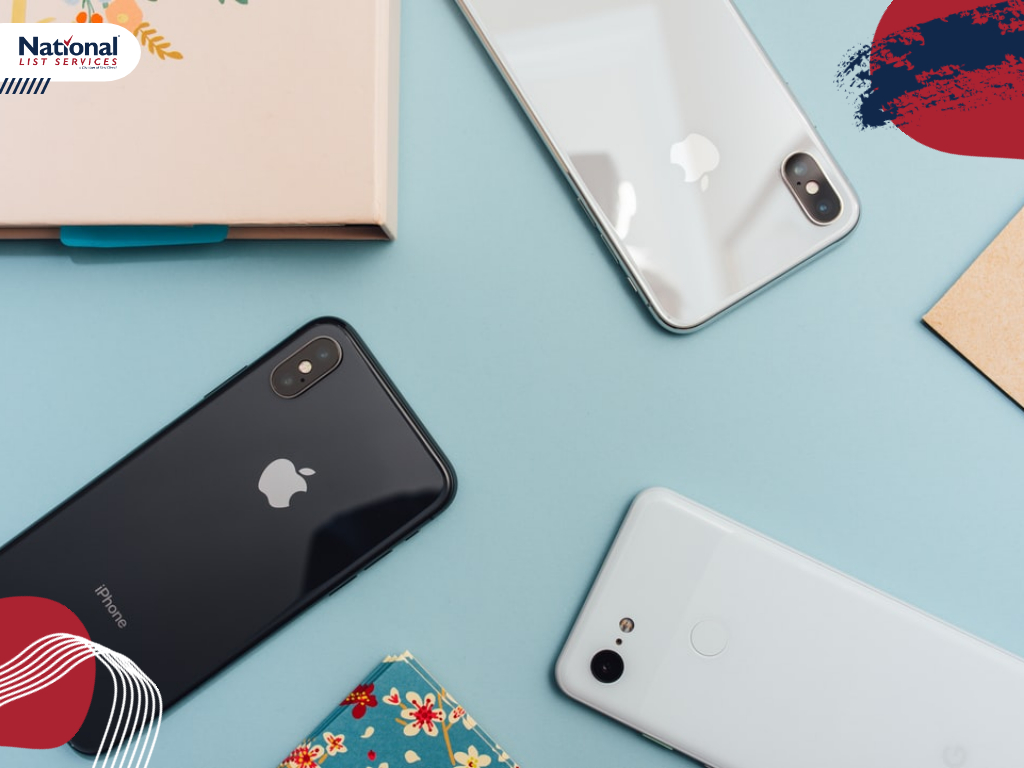
Apple is rolling out an update this week that finally does what they’ve been threatening to do for a lonnnggggg time. Control over the ADFA (Apple’s Device Identifier for Advertisers) and other app tracking tools designed for marketing are being given directly to the users. What Apple decides to do when it comes to privacy and marketing tools greatly impacts the entire industry. Why? For one thing, 45.2% of smartphones users in the United States have an iPhone. Another reason is that they have marketed themselves as the company that is going to stand up for its user’s privacy and control, even if that means going against Facebook. Or the Government.
The big question is though… what does it mean for you? As a user and as an advertiser?
What are they actually doing?
With the new update scheduled to go out this week, Apple is introducing a feature called “App Tracking Transparency.” What does it do? Well… it makes advertiser tracking between apps more transparent to users. Apple has made the ability to see (and change) what apps are tracking what for years, the difference now is that instead it being buried deep in settings, a pop-up window will show up on every app that tracks something or collects any data. This pop up (like the one for sharing location) will allow users to control what personal data each app has access to as well what other apps it can connect to.
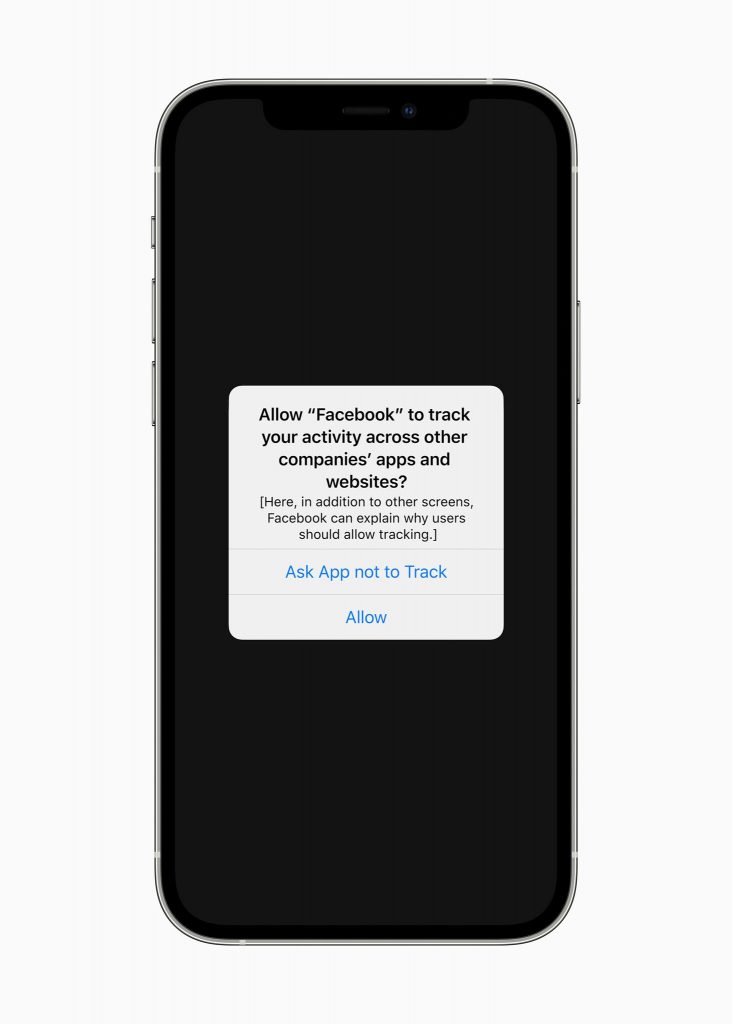
What information are apps collecting/what are they collecting? Apps (and websites) can collect a surprising amount of information that users haven’t directly given them. Some apps track your physical location. They can use this information to serve you targeted ads based on where you are in the physical world. Knowing your physical location can also give you better recommendations on things “near you,” whether that be pizza for lunch or the weather forecast.
Apps also can have tracking pixels built in. These pixels can track your movement form one app or website to another. This is how you can get an ad for something you just looked at on Amazon. Amazon has a tracking pixel built into their website, they in turn take the information the pixel has collected about visitors to target them on other websites and apps.
What choice do users have now?
In the popup window, users will now be given the choice: “Allow” and “Ask app not to track.” In the past Apple has let you decide which specific elements you would allow, like only location sharing or only ADFA tracking. However, this feature appears to be all or nothing. If you “Allow” then you are giving complete access.
What happens when you say no to tracking? Apple stops giving the app access to your ADFA, stopping it from learning about you from other apps. It also tells apps that you really would rather they didn’t track or share your information in any other ways.
Why should you allow tracking?
Personalized ads are one part of the puzzle when it comes to be tracked online. As we’ve talked about in the past, personalized ads are very effective. Younger generation that have grown up online don’t tolerate non-personalized ads very well. We are constantly inundated with content and advertising, so it is easy to completely zone out advertising (in any form) that is something you are not directly interested in. Also, many consumers now have in innate understanding of how their personal data is used to create targeted ads. Being targeted (or retargeted) based on their interests and past activities are expected. Recently surveyed consumers between the ages of 18-34, 58% said that a personalized ad helped them make a purchase decision. 42% also said that they had clicked on a sponsored ad in the last 6 months!
For a lot of us, the privacy concerns pale in comparison to function and usability of an app. A TapResearch poll conducted in August 2020 shows that 23% of iOS users are likely to opt in to sharing data with apps that request it. Another 21% of consumers are neutral on the subject, suggesting they will not opt out. Recent eMarketer research shows that 75% of consumers are willing to share their location if it enables a mobile service or saves them money. Which highlights how many users feel about personalized advertising: getting a coupon or an ad for something you were probably going to buy anyway is not a bad thing.
The Facebook Controversy
Facebook has been by far the most outspoken opponent of AppTrackingTransparency, going so far as to take-out full-page ads in newspapers and other print publications. Facebook says that AppTrackingTransparency will hurt small businesses’ ability to advertise to those in their community and Apple shouldn’t be able to make “unilateral decisions without consulting the industry about a policy that will have far-reaching harm on businesses of all sizes.”
Apple shouldn’t make “unilateral decisions without consulting the industry about a policy that will have far-reaching harm on businesses of all sizes.”
Facebook
In general, the consensus seems to be that Facebook is upset because of their ongoing rivalry with Apple and more importantly, this decision’s impact on their own revenue. In the months since its announcement Facebook has changed its tune a bit. Zuckerberg said in an interview in March on Clubhouse that Apple’s new privacy policy may actually help Facebook; if advertisers can’t find space across iOS apps they may turn to Facebook.
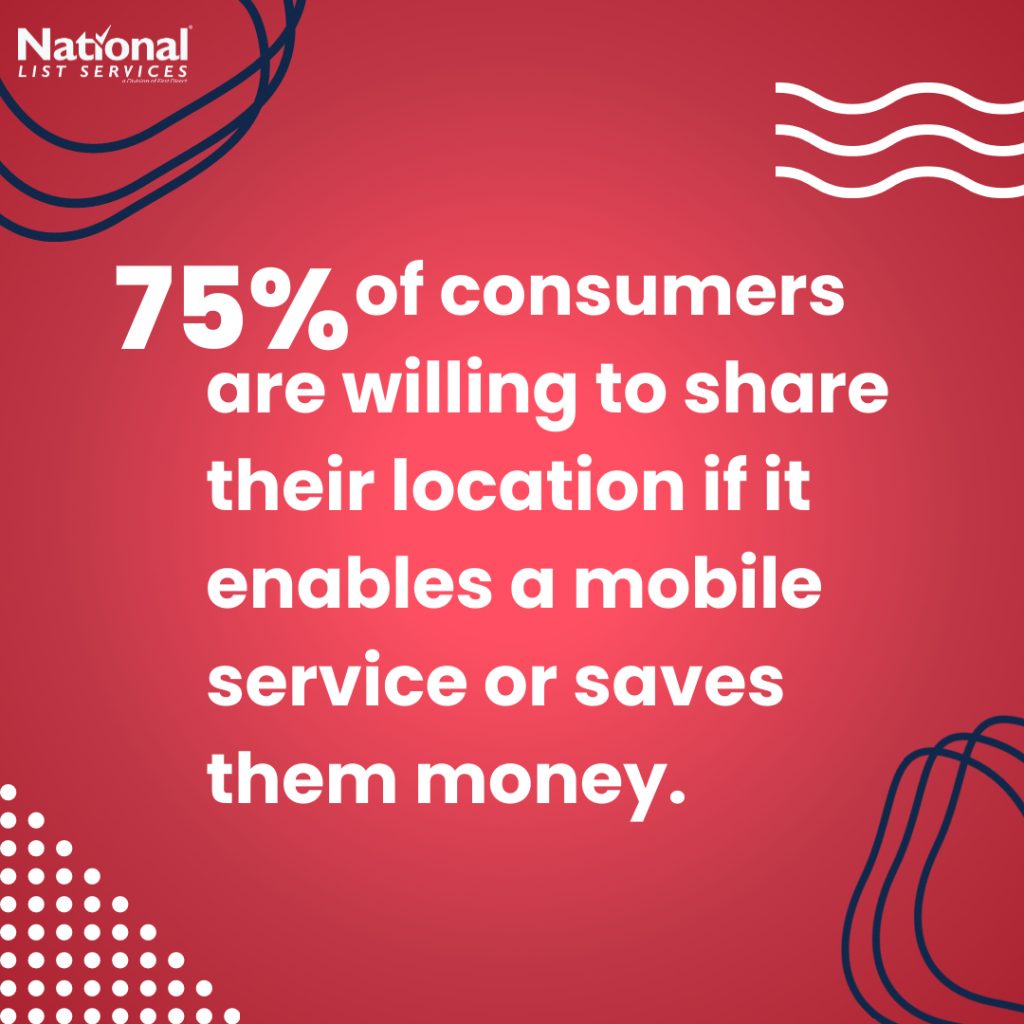
Time will tell if these changes pull advertisers more into Facebook marketing, but one thing is for sure, they have already impacted Facebooks. We were sent this by Facebook this week: “Apple released changes with iOS 14 that impacts how we receive and process events from tools like the Facebook SDK and the Facebook pixel. See updates on how these changes affect your ad account and see tasks that can help you reach your audience.” So far, the only thing we’ve seen impacted on Facebook is size audiences available. That is expected to level out though, in coming months as people re-opt-in to app tracking.
What are advertisers doing about it?
Many apps already have another type of pixel technology built into them called “Fingerprinting.” Fingerprinting has been developed recently to combat this end of cookie era. Fingerprinting works by collecting seemingly unimportant data from your device such as screen resolution, phone model, and current operating system, and combining it into a way of recognizing your unique device. Much like actual finger printing, fingerprints match to fingerprint, not a name, address, phone number etc. This allows advertisers to target you with ads without knowing who you actually are, thus getting around any data privacy issues.
There are many tools becoming available that do similar things. Tools like Household Level Identifiers that don’t target specific people. Apple hasgiven advertisers time to come up with solutions, many of which probably haven’t been released yet!
So, what do you think? Do the advantages of AppTracking outweigh the privacy costs? Are you going to allow AppTracking?
The Data You Need to Market To Those Under 25
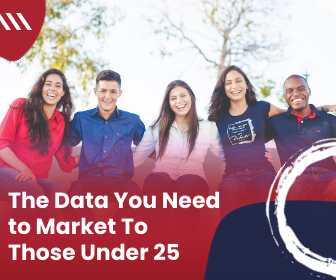
Do you ever read a statistic that just messes with your head? For example, I recently read that by 2022, 41% of the world’s population will be under 25. Which is crazy!! And creates an interesting marketing challenge. How can you effectively market to a generation who has grown up online and is constantly inundated with content and advertising?
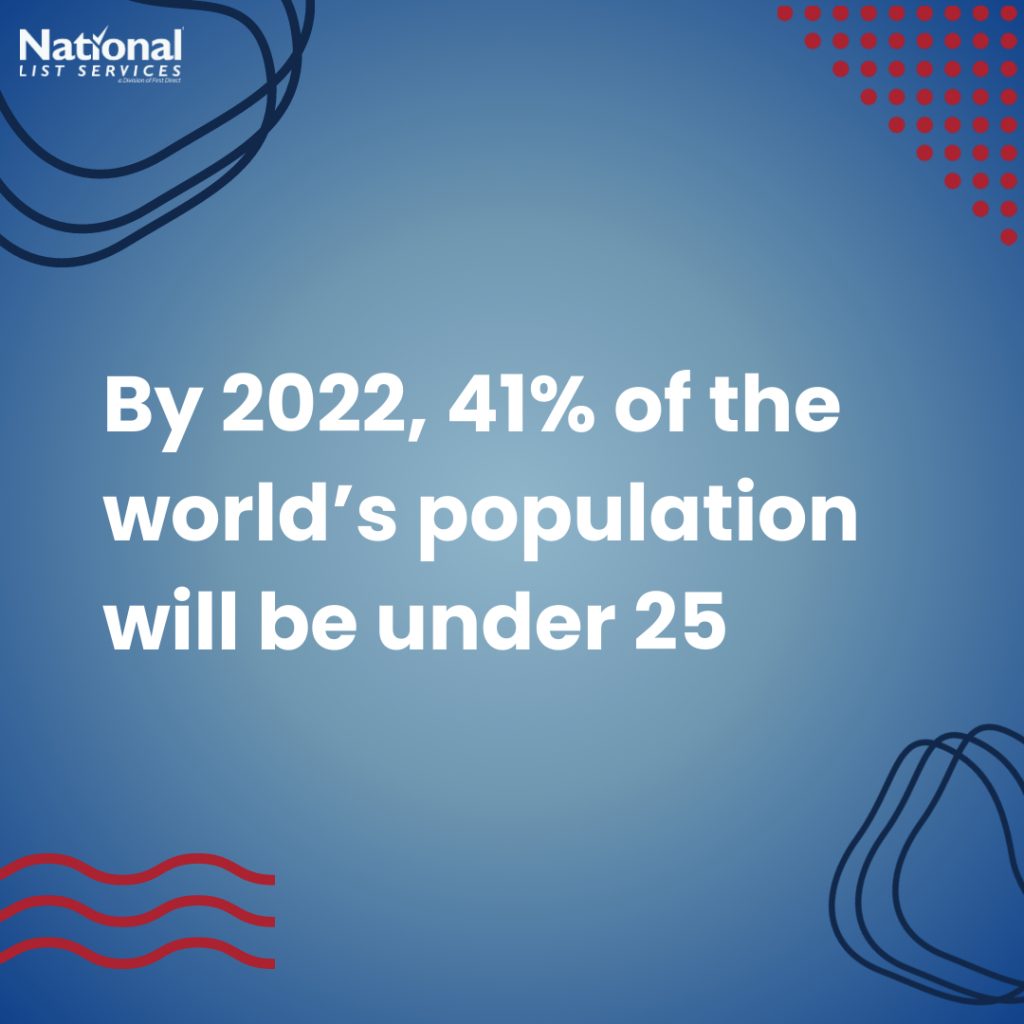
People under 25 not only take up a large share of the world’s population but they also make up a disproportionate amount of online and social media users. However, those of us in this age group statistically have shorter attention spans and tend to make decisive decisions about whether or not to consumer content or ads. A study in 2019 found that 64% of 18-24 tune out content from cluttered environments. Leading to 46% of advertisers saying that they have issues getting their content to stand out! Also, a third of advertisers say that it’s a challenge to find effective ad placement sin all the online clutter. What can you do to cut through all the online noise and reach this massive market?
#1 – Find Shared Passions
The sheer amount of product, companies, and information available is staggering. It is not enough anymore to have a good product available anymore, your brand ideals and personality need to match with the personality of your consumers. 56% of Gen Z consumers say that having shared passions and perspectives is a major factor when it comes to their engagement with a brand. However, Gen Z’ers are fantastic at sniffing out inauthenticity. Your brand personality and ideals need to actually be what you say they are. Actions speak louder than words!
What are the advantages of having a well-defined brand personality and ideals? Giving your company a personality makes things like content creation a lot easier. Knowing who you are also can help you make decisions about the direction you want to go in the future.
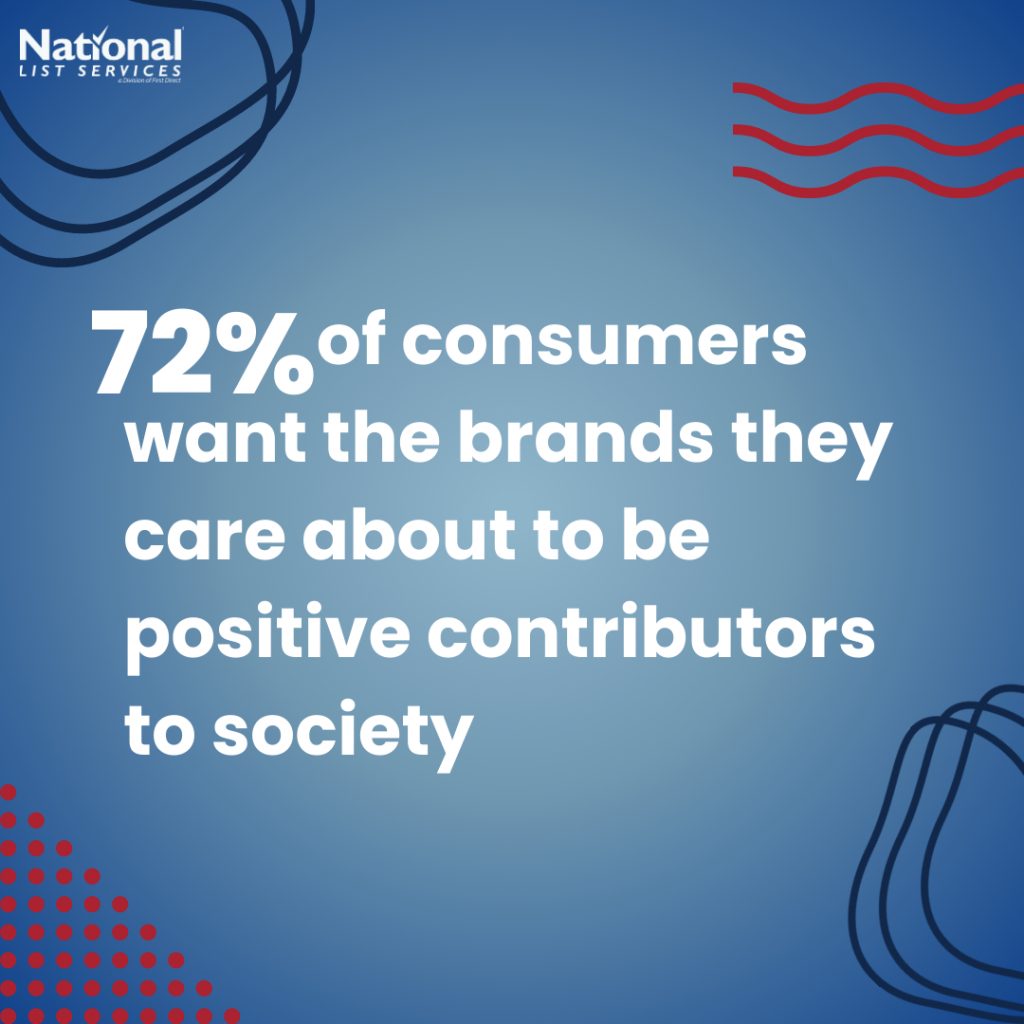
And 49% of young consumers say they will evangelize a brand they feel represents their values, likes, and personality.
Don’t be afraid of incorporating causes you care about into your brands personality! 72% of consumers want the brands they care about to be positive contributors to society. We’ve seen in recent years that many brands (especially smaller companies) connect their core brand to a charity or cause they care about. Younger consumers are 69% more likely to buy from a brand that contributes to a cause.
#2 – Choose Quality Locations
Younger generations are big on authenticity, brand trust, and quality. 74% of 18–24-year-olds believe that brands are responsible for where their ads are shown. Which is true! There’s very little excuse for having your ad show up on a website that doesn’t believe in the same things as you. Programmatic advertising and digital display ads give you a lot of control over your ad placement. Nearly 40% of advertisers have faced some backlash for having ads appear near low quality content. 54% of younger consumers say that ads placed near premium content inspires more trust in the ad itself!
#3 – Use Innovative Technology
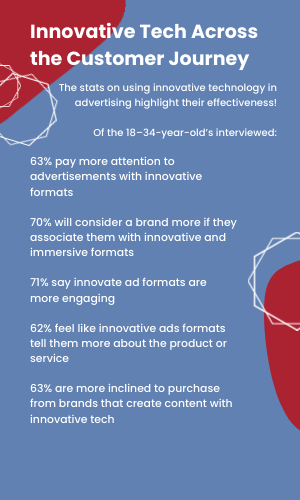
From AI and AR driven content to native and contextual ads, technologically advanced are advertisements are becoming more accessible. The stats on their effectiveness across the entire marketing journey speak for themselves!
Of the 18–34-year-old’s interviewed:
63% pay more attention to advertisements with innovative formats
70% will consider a brand more if they associate them with innovative and immersive formats
71% say innovate ad formats are more engaging
62% feel like innovative ads formats tell them more about the product or service
63% are more inclined to purchase from brands that create content with innovative tech
#4 – Personalization
Personalized ads are effective for every age group. Gen Z’ers and Millennials are less tolerant of ads that aren’t personalized. Most younger consumers have in innate understanding of how their personal data is used to create targeted ads. Being targeted (or retargeted) based on their interests and past activities are expected. Thankfully creating effective personalized ads are easier than ever to make.
- What can you do to create effective personalized ads? Start with the information you have about your customers. It’s difficult to know what your customers want if you don’t know who they are. Look at your 1st party data. What are your most common demographics? What are their interests? How would they most like to be communicated with?
- Use the tools available. Marketing automation platforms and CRMs can do a lot of the heavy lifting when it comes to segmenting data. Many of them are designed to help create simple, personalized messages.
- Have a well thought out plan. Do you have a mapped-out customer journey? Knowing where in their journey your customers are makes a big difference in the types of personalization that will work for them. Think about nurturing. Pay attention to the details. Make sure that there aren’t little annoying things such as, getting an abandoned cart email even though you’ve already come back to purchase it. Get rid of triggers that are connected to repurchasing products commonly only purchased once.
- Know when to walk away. Keep your data clean. If someone has never opened an email it might be a good idea to take them off your list. Their data could skew your demographics and could make understanding what personalization your active customers need difficult.
Is it effective?
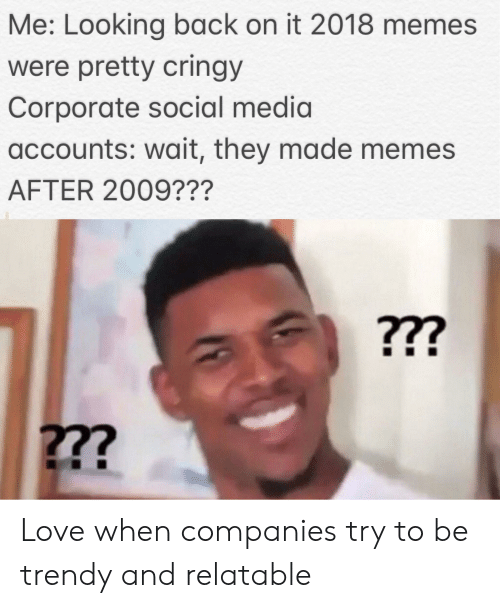
Is it effective? Yes! From that survey of consumer between the ages of 18-34, 58% said that a personalized ad helped them make a purchase decision. 42% also said that they had clicked on a sponsored ad in the last 6 months!
In my experience, a lot of companies panic when thinking about marketing to young consumers. They feel like they need to be relatable or “cool.” That often comes off as disingenuous and is easy to see right through. It’s far more effective to instead focus on building a relationship with them. Make it easier for them to see who you are and what you stand for. Chances are they care about the same things you do!
What Tasks Should You Delegate To Other Businesses?
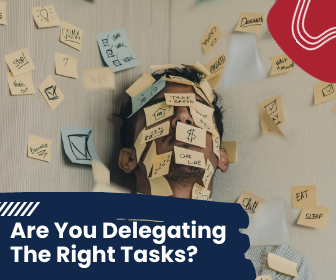
Our podcast, BeGrowthDriven, this week was all about things that are valuable to delegate to other businesses. Here the 5 things that we (and our guest Joe Camacho) found to be at the top of the delegation list!
Why Delegation?
We aren’t talking about just task delegation here. The delegation we are talking about is bigger than that. It can be easy an entrepreneur to try and wear all the hats yourself. We get that. However, there’s a lot of things that aren’t, uh, necessarily in your wheelhouse that can suck up a lot of time and effort. Delegation or farming out those tasks can free up your time so you can focus on the things you need to do to grow your business.

A lot of people hesitate to delegate some of these tasks because they think that if take care of it themselves, it will save money. That’s not always true. Sometimes short-term saving has long term costs.
Obviously, every company has different specialties so the tasks that need delegating will be different. However, these 5 are things that often fall into the category of thing that small companies try to do themselves and then up regretting it later.
#1 All the IT stuff
In this digital age, some IT services are a requirement. If you don’t know how to set up behind the scenes of a website or cloud services, it can be very time consuming (and expensive) to learn. There are so many companies and entrepreneurs who focus on IT services and management. They can help! Having it don’t right in the beginning will make it easier for the future.
#2 Compliance
Every year more and more regulations are added to the internet. Regulations about data usage, cookies, accessibility, etc. There are even more regulations if you are in specifics fields such as the medical and health industry. If you break a rule you didn’t even know was there can have serious consequences! Delegating compliance services to a specialist makes sure you don’t have any nasty surprises down the road.
#3 Branding
Branding is more than just a logo. It’s the entire outward facing personality of your brand! It can be difficult to look at your brand objectively, which is one of the reasons while delegating branding is a good idea! A graphic designer or branding agency knows the right questions to ask to help you figure out who your brand is. And they know all the technical things that need to happen to make sure your branding has the pieces you need to grow your business.

#4 Web Design
There are soooooo many free (or cheap) web design tools out there and honestly, some of them are really great! However, designing a website can be a lot more complicated than it appears. There’s a lot of technical aspects behind the scenes. Things like DNS and Domain Hosting are time consuming to learn how to set properly. Web design can be overwhelming and frustrating if it’s out of your element and might be worth delegating.
#5 Digital Advertising
Digital advertising is a massive field. There’s digital display, and programmatic adverting, and social media. There are entire agencies that do only Facebook ads! It can be difficult to know where to begin with online advertising: What software should you use? What’s the right channels for your business? What creative will work best? How much money should you invest? Where should you send the traffic you acquire? Delegating your digital ads will help you make money!
Some of these tasks we do for clients but others we delegate out ourselves! The key is to know what’s the best use of your time.
Did we miss any good tasks to delegate? Let us know!
Why do you need online reviews?
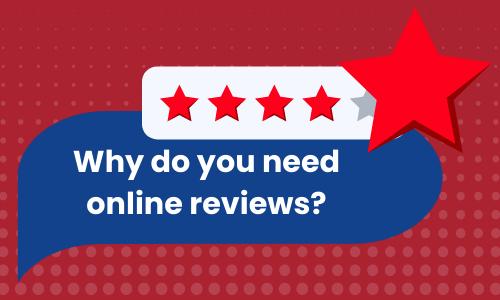
Online reviews are a staple of our lives now. Why should you care about the reviews that your company or products are getting online? Here’s what we have found!
The Social Proof Phenomenon
What do online reviews have to do with “social proof?” “Social Proof” is the phenomenon based on the fact that it’s easier to buy things or trust companies if we know that other people already have. Our peers provide the proof of somethings value.
“Social proof” is part of the transparency that builds brand trust. Most consumers (almost 88%) research a business before buying from them. A lot of that research comes from reviews and reading what other people have said about their experiences.
What else can Reviews Do for you?
Reviews can help educate consumers on your products and services. Reviewers usually talk about their specific experiences in their reviews. It can be an easier way for potential customers to learn more about what you offer.
Reviews Boost SEO. Specifically, Google Reviews. Google indexes reviews connected to your listing to help filter results. Especially for local traffic. “Best __ Near Me” is decided by reviews and stars. Customers will often use your keywords in reviews without even realizing it. This helps Google learn about you.
What can you do to collect reviews?
People are inclined to leave reviews if they a specifically positive or negative experience. Therefore, work hard to provide an overwhelmingly positive expertise for your customers! (You should be doing this anyway; the review is just a byproduct. 😉 )
People like to do things for other people so a great way to collect reviews is to just ask for them! A follow up survey email after they buy from you is an easy way to this. Ask them specific, easy to answer questions about things such as: service response times, shipping times, product or service quality etc.
Make it easy to review you. No one has time to take 10 minuets following a complicated review survey with long required written answers. People are doing you a favor by reviewing you, show that you apricate it by being respectful of their time and effort. Take out pain points of the review process: go through and make sure there aren’t any unnecessary steps or questions. Double check the user interface, id it easy to figure out?
Incentivizing your reviews (specifically ecommerce) is a big no-no! As temping as it is to show your appreciation for the review with a coupon or free shipping, or something: don’t. Both Google and Yelp have policies in place banning incentivized reviews. They will take the reviews down and give you a slap on the wrist.
What to do with reviews once you have them
You have the reviews – now what? Here’s 2 ways to leverage them!
- Show them off
Let your reviews sell your product for you. Happy previous customers can be a great way to convince your potentials to buy from you! Show off your reviews on your home page with Google review widget or prominently feature some reviews as part of the design. Don’t forget to ask for permission first if you are going to highlight a specific review, especially if you are going to use their picture. - Engage with reviewers
let them know you appreciate them! It doesn’t have to be a big deal, simply liking the review or just saying thanks goes a long way. That little bit of effort can turn a happy customer into a loyal one. And a lot of marketing automation software makes replying to reviews across multiple platforms easy.
Do you have a favorite customer review?
While we are on the subject… leave us a review! 😜

